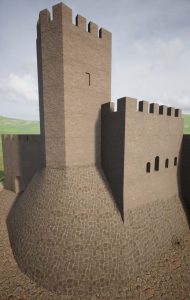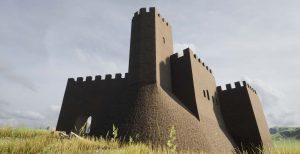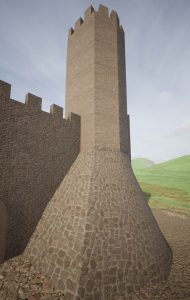The tower of Monteleone is the symbol of the entire village and stands tall with its distinctive uneven hexagon shape.
The castle of Càsoli is attested in 1050, 1099 and 1118 with adjoining church of Saint Mary (later entitled to Saint John the Baptist), erected on the site of a previous place of worship. The imposing irregular hexagon tower of Càsoli is documented in 1118, when the abbot of Farfa was Berardo III.
It was built as a watchtower for the defense of the territories owned by the Farfense monks who had erected their large monastery in nearby Santa Vittoria in Matenano.
It also functioned as a warehouse in case of attack because it could guarantee sustenance with the provisions stored to the population that would take refuge inside it to escape death.
The settlement of Farfenses people in Santa Vittoria in Matenano and the construction of the tower, slowly gives rise to the center of Monteleone di Fermo around it, soon becoming a village populated by buildings and with a solid wall.
In 1250 the tower was partially destroyed by an attack of the army of Fermo. Probably only the highest part had collapsed under the blows of the catapults and once conquered Monteleone, the Fermans people provided to rebuild a new tower on the stump still intact. The strategic position of Monteleone and especially of its tower so high and functional was certainly not ignored by the Fermans who immediately employed their efforts to rebuild it.
Around the end of 1300 the watchtower also became the bell tower of the church of San Giovanni Battista after it was built by closing the old entrance door to the village that was placed right next to the tower of Berardo. Even now, on the wall above the square outside the walls, there were signs of battlements embedded in the wall of the church.


